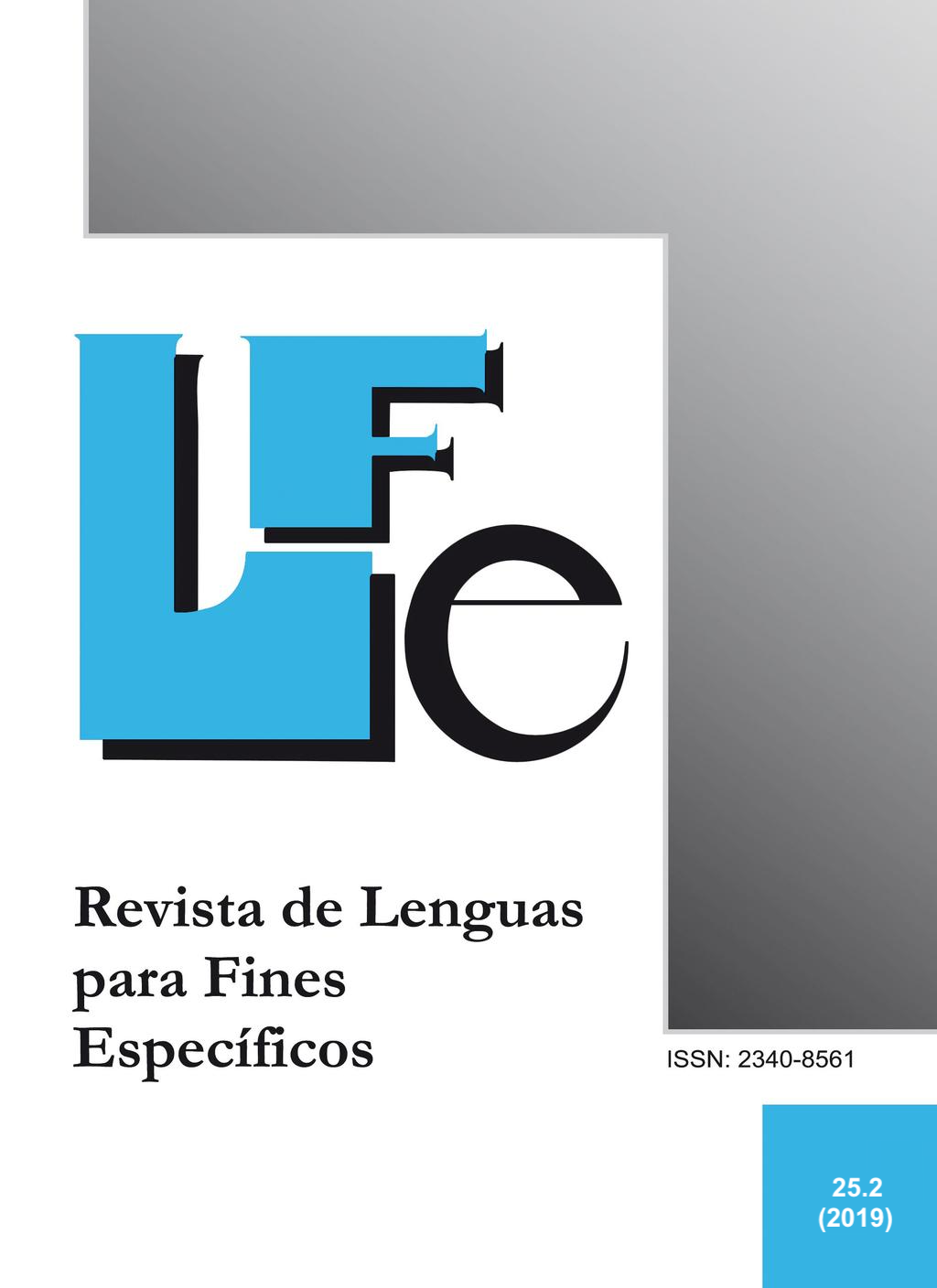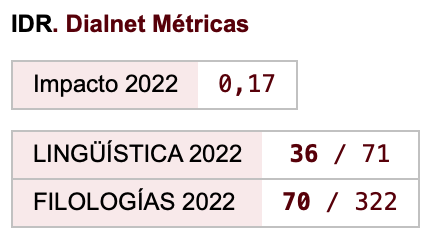The development of culture in English foreign language textbooks: the case of English File
Resumen
The cultural content of textbooks has become an important issue since the main goal of teaching English as a foreign language has shifted from communicative competence to intercultural citizenship. This paper reviews the trends in teaching culture in EFL and examines different approaches to the cultural analysis of textbooks. Then, our study analyses the cultural content of two editions of an intermediate (B1) EFL textbook using our own cultural content checklist. By comparing older and more recent editions, we examine how comprehensive the cultural content is in each book and determine how many thematic categories are covered in both textbooks.
Descargas
Citas
Aliakbari, M. (2004). The place of culture in the Iranian ELT textbooks in high school level. Paper presented at the 9th Pan-Pacific Association of Applied Linguistics Conference. Namseoul University, Korea. <http://www.paaljapan.org/resources/proceedings/PAAL9/pdf/Aliakbari.pdf> [9/10/2018].
Byram, M. (1997). Teaching and Assessing Intercultural Communicative Competence. Clevedon: Multilingual Matters.
Byram, M. (2008). From Foreign Language Education to Education for Intercultural Citizenship: Essays and Reflections. Clevedon: Multilingual Matters.
Byram, M. & Esarte-Sarries, V. (1991). Investigating Cultural Studies in Foreign Language Teaching: A Book for Teachers. Clevedon: Multilingual Matters.
Byram, M. & Morgan, C. (1994). Teaching-and-Learning Language and Culture. Clevedon: Multilingual Matters.
Cheng, C. M. (2012). The influence of college EFL teachers’ understandings of intercultural competence on their self-reported pedagogical practices in Taiwan, English Teaching: Practice and Critique, 11(1), 164-182.
Cortazzi, M. & Jin, L. (1999). Cultural mirrors: materials and methods in the EFL classroom. In E. Hinkel (Ed.), Culture in Second Language Teaching and Learning (pp. 196-219). Cambridge: Cambridge University Press.
Cunningsworth, A. (1995). Choosing Your Coursebook. Oxford: Heinemann.
Freebairn, I. (2000). The coursebook – future continuous or past? English Teaching Professional 15, 3-5.
Gray, J. (2010). The Construction of English: Culture, Consumerism and Promotion in the ELT Global Coursebooks. Basingstoke: Palgrave Macmillan.
Guilherme, M. (2002). Critical Citizens for an Intercultural World: Foreign Language Education as Cultural Politics. Clevedon: Multilingual Matters.
Hall, E. T. (1976). Beyond Culture. Garden City, NY: Anchor Press, Doubleday.
Kramsch, C. (1993). Context and Culture in Language Teaching. Oxford, England: O.U.P.
Krippendorff, K. (2004). Content Analysis: An Introduction to Its Methodology. Thousand Oaks, CA: Sage.
Lai, H. Y. T. (2014). Learning English as an international language: EFL learners’ perceptions of cultural knowledge acquisition in the English classroom. Asian Social Science, 10(1), 1-11.
Larrea-Espinar, A. (2015). El aprendizaje cultural en la enseñanza de inglés y su alcance en los libros de texto. Revista Española de Lingüística Aplicada, 28(1), 145-168.
Latham-Koenig, C. & Oxenden, C. (2013). English File Intermediate. Oxford: O.U.P.
Lee, K. Y. (2009). Treating culture: What 11 high school EFL conversation textbooks in South Korea do. English Teaching: Practice and Critique, 8, 76-96.
Luk, J. (2012). Teachers’ ambivalence in integrating culture with EFL teaching in Hong Kong. Language, Culture and Curriculum, 25(3), 249–264.
Méndez-García, M. (2005). International and intercultural issues in English teaching textbooks: The case of Spain. Intercultural Education, 16(1), 57–68.
Oxenden, C. & Latham-Koenig, C. (1999). English File Intermediate. Oxford: O.U.P.
Paige, R. M., Jorstad, H., Siaya, L., Klein, F. & Colby, J. (1999). Culture learning in language education: A review of the literatura. In R. M. Paige, D. L. Lange & Y. A. Yeshova (Eds.), Culture as core: Integrating culture into language curriculum (pp. 47-113). Minneapolis, MA: University of Minnesota.
Prodromou, L. (1992). What culture? Whose culture? Cross-cultural factors in language learning. ELT Journal, 46(1), 39-50.
Raigón-Rodríguez, A. R. (2015). El desarrollo de la competencia comunicativa intercultural a través del aprendizaje cultural en los libros de texto. LFE. Revista de lenguas para fines específicos, 21(1), 88-108.
Risager, K. (1991). Cultural references in European textbooks: an evaluation of recent tendencias. In D. Buttjes & M. Byram (Eds.), Mediating Languages and Cultures: Towards an Intercultural Theory of Foreign Language Education (pp. 180-192). Clevedon, UK: Multilingual Matters,.
Risager, K. (2011): The cultural dimensions of language teaching and learning. Language Teaching, 44 (4), 485-499.
Skierso, A. (1991). Textbook selection and evaluation. In M. Celce-Murcia (Ed.), Teaching English as a Second or Foreign Language (pp. 432-453). Boston: Mass.: Heinle and Heinle.
Starkey, H. (1991). World studies and foreign language teaching: converging approaches in textbook writing. In D. Buttjes & M. Byram (Eds.), Mediating languages and cultures: Towards an Intercultural Theory of Foreign Language Education (pp. 209-227). Clevedon, Multilingual Matters.
Tomalin, B. & Stemplesky, S. (1993). Cultural Awareness: Resource Books for Teachers. Oxford: Oxford University Press.
Varón-Páez, M. E. (2009). Componente cultural, libros de texto y enseñanza del inglés como lengua extranjera. Forma y Función, 22(1), 95-124.
Weninger, C. & Kiss, T. (2013). Culture in English as a Foreign Language (EFL) textbooks: a semiotic approach. TESOL Quarterly, 47(4), 694-716.
Weninger C. & Kiss, T. (2015). Analyzing culture in foreign/second language textbooks: methodological and conceptual issues. In X.L. Curdt-Christiansen & C. Weninger (Eds.), Language, Ideology and Education: The Politics of Textbooks in Language Education (pp. 50-66). London: Routledge,.
Wu, J. (2010). A content analysis of the cultural content in the EFL textbooks. Canadian Social Science, 6(5), 137-144.
Yuen, K.-M. (2011). The representation of foreign cultures in English textbooks. ELT Journal, 65, 458-466.
Zarei, G. R. & Khalessi, M. (2011). Cultural load in English language textbooks: an analysis of Interchange series. Procedia Social and Behavioral Sciences, 15, 294-301.
Descargas
Publicado
Cómo citar
Número
Sección
Licencia
Aquellos autores/as que tengan publicaciones con esta revista, aceptan los términos siguientes:
- Los autores/as conservarán sus derechos de autor y garantizarán a la revista el derecho de primera publicación de su obra, el cuál estará simultáneamente sujeto a la Licencia de reconocimiento de Creative Commons que permite a terceros compartir la obra siempre que se indique su autor y su primera publicación esta revista.
- Los autores/as podrán adoptar otros acuerdos de licencia no exclusiva de distribución de la versión de la obra publicada (p. ej.: depositarla en un archivo telemático institucional o publicarla en un volumen monográfico) siempre que se indique la publicación inicial en esta revista.
- Se permite y recomienda a los autores/as difundir su obra a través de Internet (p. ej.: en archivos telemáticos institucionales o en su página web) antes y durante el proceso de envío, lo cual puede producir intercambios interesantes y aumentar las citas de la obra publicada. (Véase El efecto del acceso abierto).

Revista de Lenguas para fines específicos is licensed under a Creative Commons Reconocimiento-NoComercial-SinObraDerivada 4.0 Internacional License.
























